A 3-axis professional gimbal for about $65 USD? Is it any good? Yes, says the Alfawise smartphone gimbal. Alfawise is a brand of consumer electronics made in China. Notably, the brand offer pretty much a large range of electronics products such as power banks, memory cards and even Mini PCs. You may see a similar-looking models under a different brand as they are probably all made in the same OEM factory.
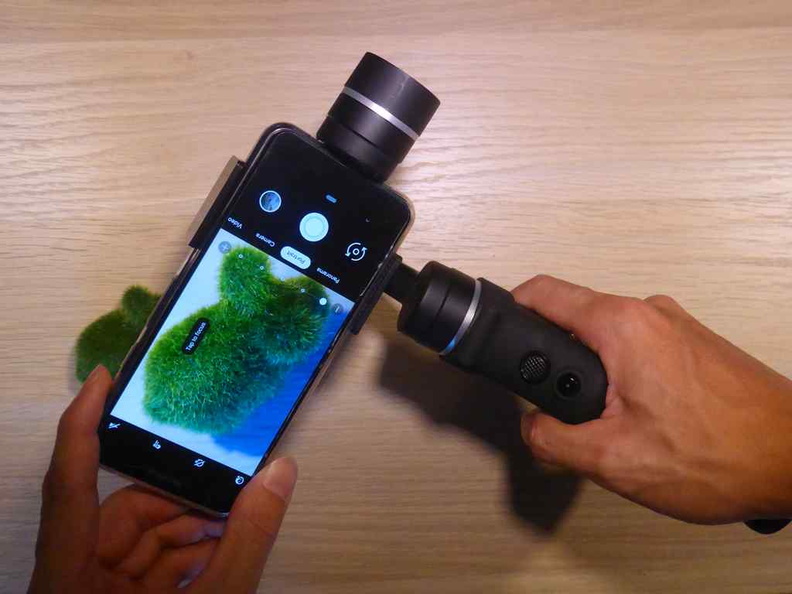
They are usually sold through online e-commerce retailers who bridge the Chinese to Western market. One such as merchant where Alfawise-branded products are sold includes Gearbest.com. That is where I got this gimbal from. Let’s check out the with an in-depth review today.
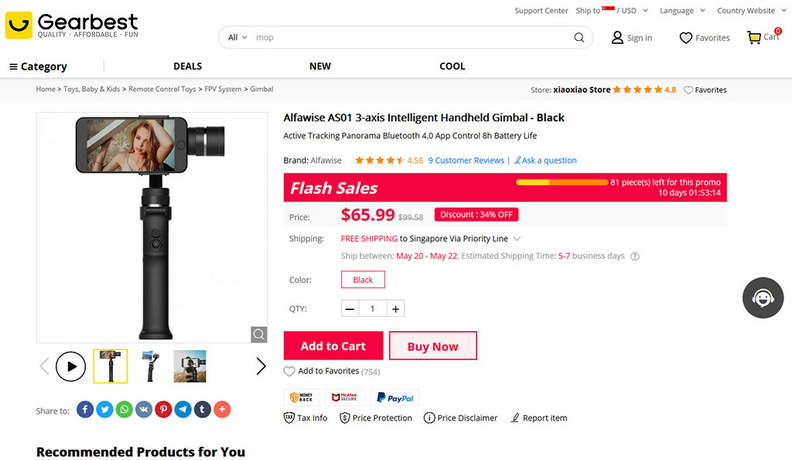
What a gimbal does?
What a battery-powered stabilised gimbal provides is electrical gyroscopic stabilisation. This means it uses electrical MEMs unit such as gryoscopes and accelerometers to keep the payload area of the gimbal, your camera in a fixed orientation regardless. It is bit tat like what a chicken head could do.
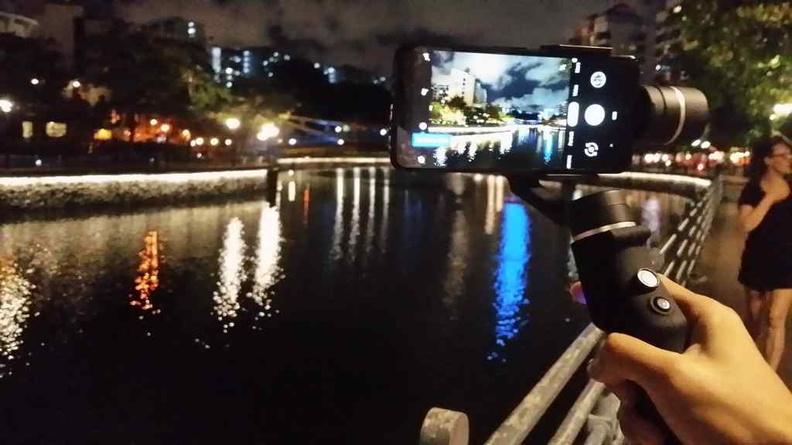
Traditionally, this stabilisation was achieved using weighed mechanical swing arms, or otherwise known as “Steadicams”. This is an inertia weighted gimbal which is often less compact and much heavier this is a far cry from mechanical weighed gimbals or Steadicams which are heavy and cumbersome. Notably, electronic gyroscopic gimbal stabilisation is the in-thing now and things had gotten cheaper, much cheaper.
Good build for the price
Furthermore, on first impressions, the gimbal feels well-built in hand. The entire unit is made out of plastic and held together by screw holes. These holes are exposed, especially around the handle area where you can find them littered throughout the unit.
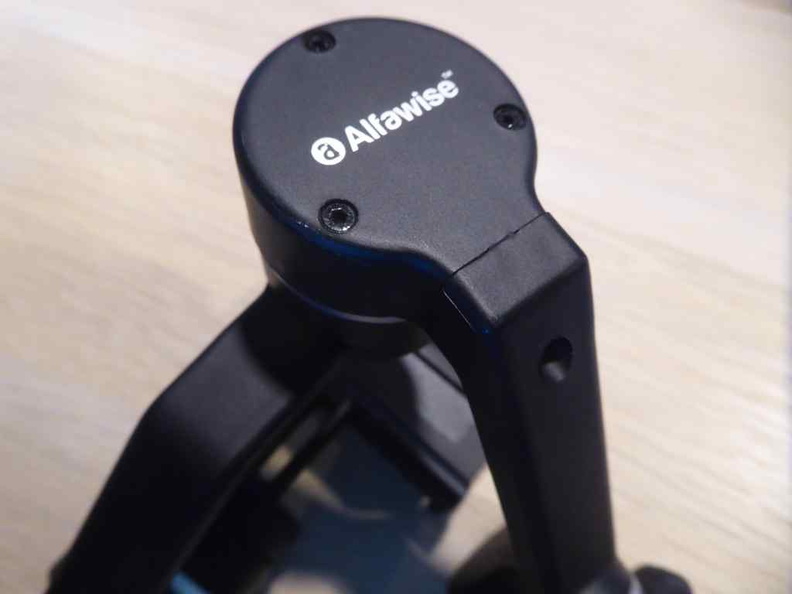
Moreover, the gimbal feels rubberised with a grippy coating on its exterior. Notably, it does gives it a premium feel. Also, it feels light and balanced in-hand with the most weight and the center of gravity suited in the handle of the unit. This is particularly due to the battery situated in the handle grip of the gimbal.

Competition on the market
Notably, the current consumer handheld gimbals in the smart phone segment is largely ruled by two other Chinese brands. The market leaders includes DJI with their Osmo Mobile 2 and the Zhiyun Smooth 4, both handheld stabilizers costing about $188 SGD and $178 SGD respectively (Approx $110 USD).
The current leader in consumer small gimbals is the DJI Osmo Mobile 2. In this review, you will see myself often comparing the Alfawise to this current market benchmark in electronic Gimbals.
What is in the box?
Out of the plain unbranded cardboard box, you get simply the essentials. It comes branded with an Alfawise brand printed on the unit, which I could assume is branding by the china capture OEM. Taking centerstage is the entire one-piece gimbal unit. Also, the battery is removable and is of the standard Li-ion universal 16500 type cylinder battery you can find in USB fans. I shall touch more about this in the battery tests.
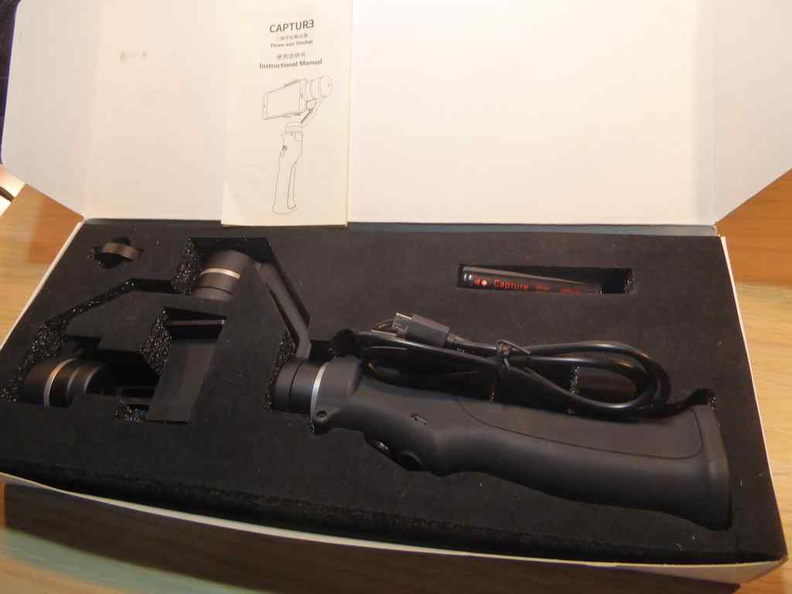
Additionally, in the box, you get a bi-lingual instruction sheet in English and Mandarin. Alfawise has included a single piece small screw-on counter weight. That is pretty much everything in the box.
Good build quality, with some rough corners!
The build quality of the 3 axis handheld gimbal is not bad. The unit build feels solid and is the arm and motor assembly are held together by screws. The arm feels rigid, dense and does not flex. The arms motions also feels damped and does not creak. It survived the rough use when filming out in the field and swapping out various cameras on it.
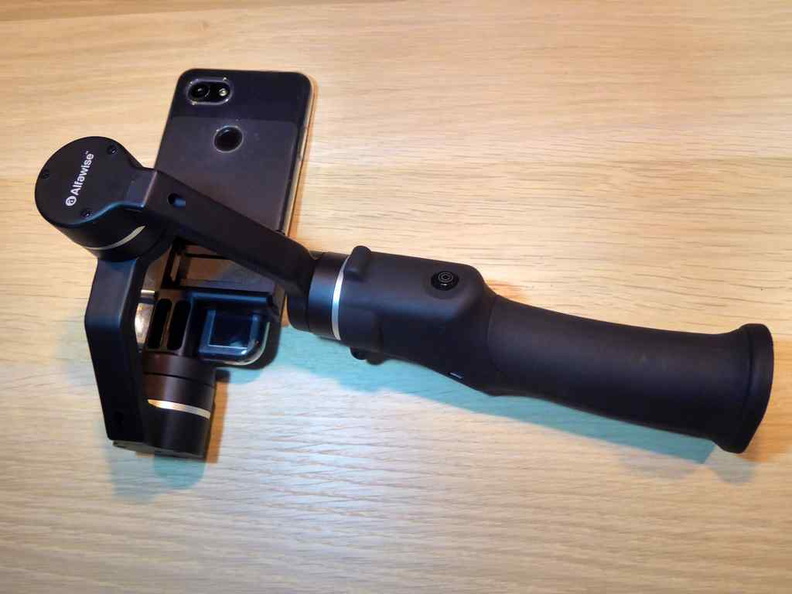
Setting it up
Getting the gimbal up is a breeze. If you have a small phone under 200 grams or under 6 inches in screen size (like the Pixel 3), all you have to do is to snaps your phone right in place on the gimbal holder. The arm can take phones width up to 8cm.
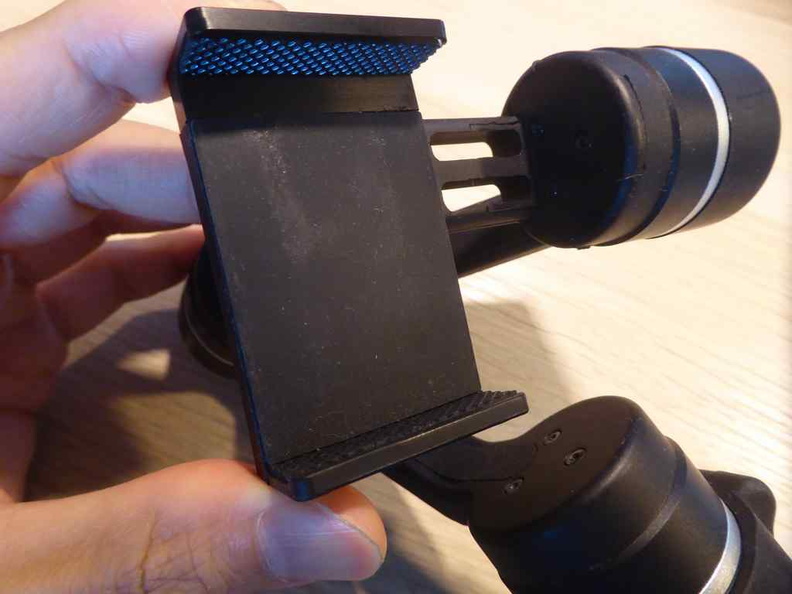
However, if you are snapping on a larger phablet-like a Samsung Note series, you will need to tack a counterweight. You can simply screw on the counter weight on the back of the tilt motor located on right end of the gimbal arm. This small disc weight on the swing arm acts as a counter-balance and reduces the torque load on the gimbal motor for balancing the heft of larger phones.
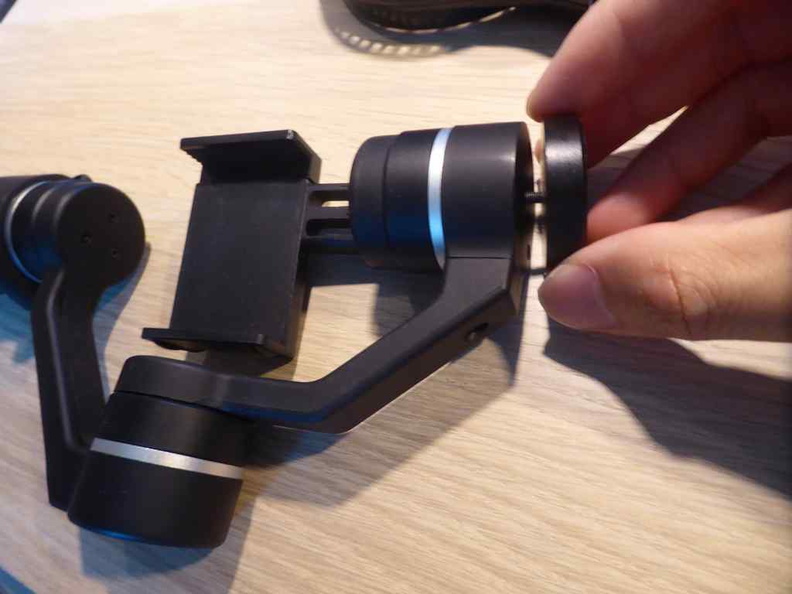
The gimbal on specifications is able to handle phones up to 250 grams in weight. In comparison, the DJI Osmo has a 2600 mAh battery and weighs 485g with a maximum motor load of 240g.
Operating the Gimbal
When ready, turn it on by holding the front power button using your thumb button and your gimbal will make a small chime and automatically rights itself into a centered position.
In my tests, the Alfawise gimbal does a very good job in keeping my shots stable in all sorts of orientations.
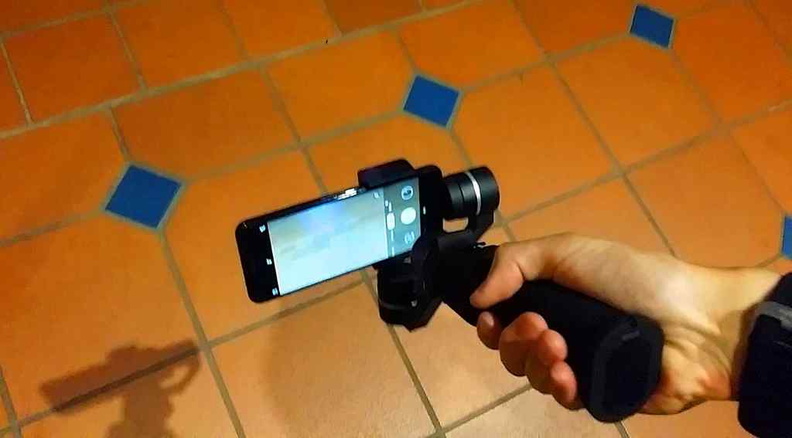
Also, it automatically rights itself when held upright, or even upside down underslung for chase shots. 3-axis motors keeps your phone stable through actuation motors on three axes. This is namely the Pan motor which rotates horizontally, tilt motor which points your phone looking upwards or downwards and finally the roll motor.
Gimbal stabilisation modes
The gimbal has two modes of operation. First a “Free Mode” which keeps the gimbal locked in a fixed orientation ignoring your movement. Here, your mobile phone try to stay it’s best in its current orientation position regardless of your handle movements.
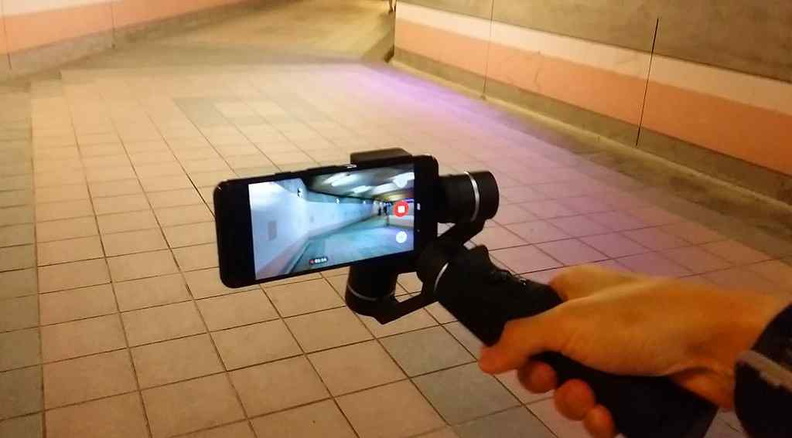
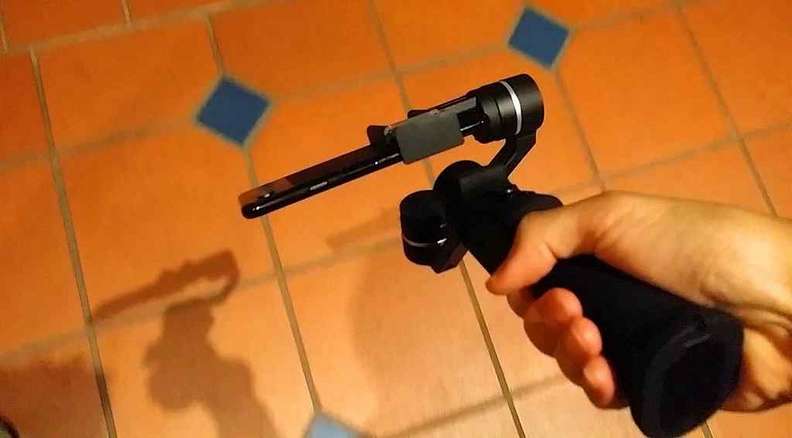
Moreover, in Free mode pressing the Power or mode button puts it to the second Follow Mode. This secondary shooting mode allows for what I would like to call “tracking mode”. This allows you to move or train your camera onto say, a side subject, the camera slowly horizontally pans to catch-up to the direction of the handle you are pointing to. This allows you to smoothen out any abrupt motions when shooting subjects out of your field of view.
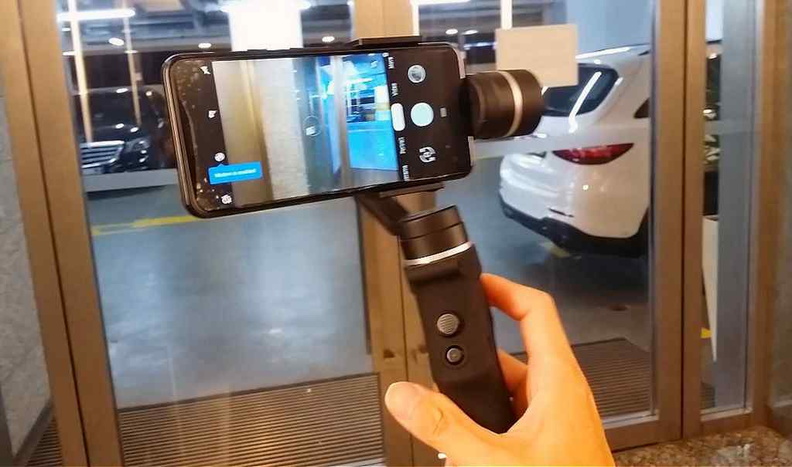
Landscape-only shooting
Furthermore, on range of motion, the gimbal is able to tilt up and down 170 degrees, it is comparable to the competition. However, the gimbal arms does not fold in place and lock in place which makes storage tad bit more of a challenge.
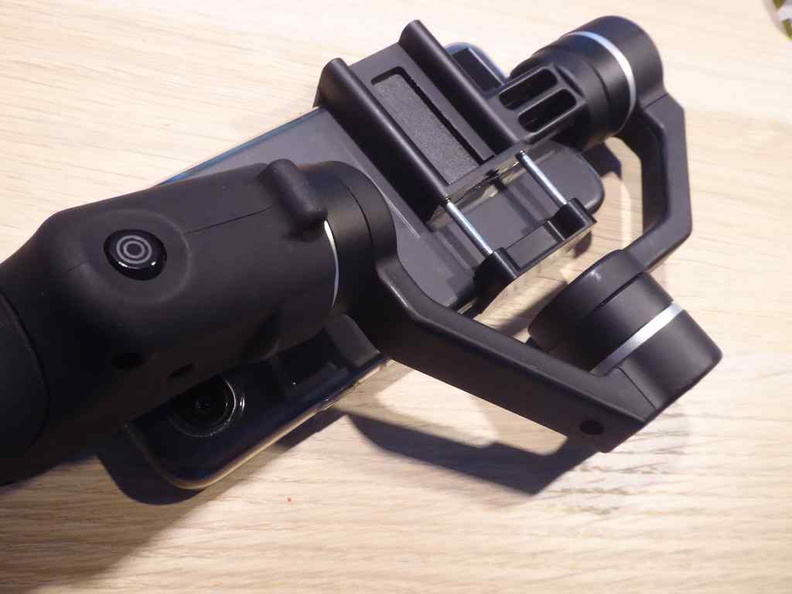
Moreover, the phone mount is fixed only in the Landscape orientation. Because of this, mechanically, the gimbal can only record in landscape node and is not able to rotate into portrait orientation. This is not an issue if you only shoot in landscape orientation.
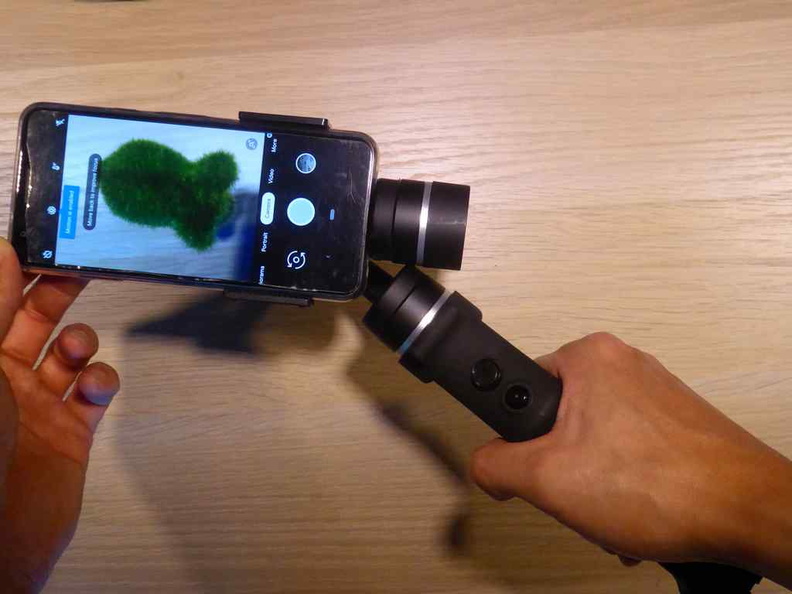
However, given this limited range of the Alfawise gimbal, you do not get any selfie mode. This is unlike the Osmo, which allows you to rotate your phone 180 degrees to face yourself in the said selfie mode (achieved when you press the Osmo trigger three times in quick succession).
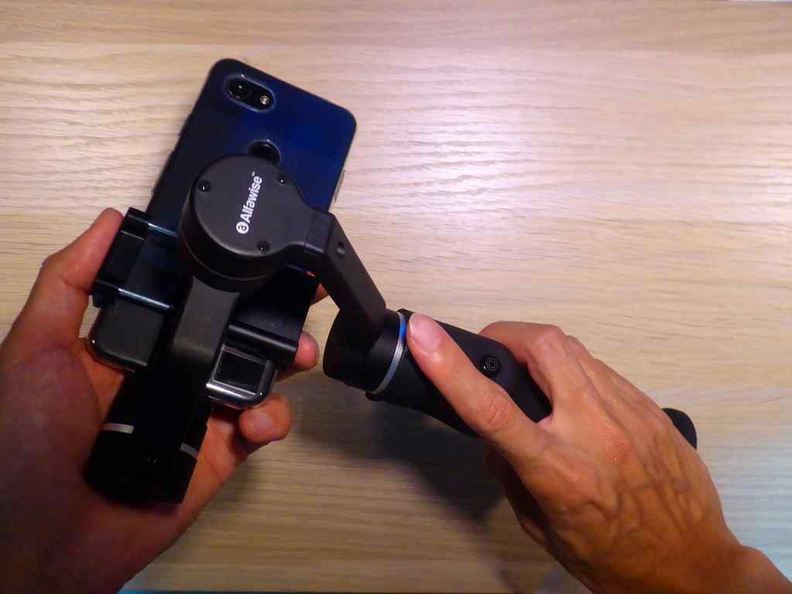
Gimbal controls and indicators
The controls on the gimbal are simple by rather limited. There are two control buttons. One thumb power button and an index finger front trigger button which serves as a remote shutter when paired to the official Gimbal remote app “Capture” via Bluetooth. The thumb button also doubles out as a mode button when ON with its state backlit by a blue LED.
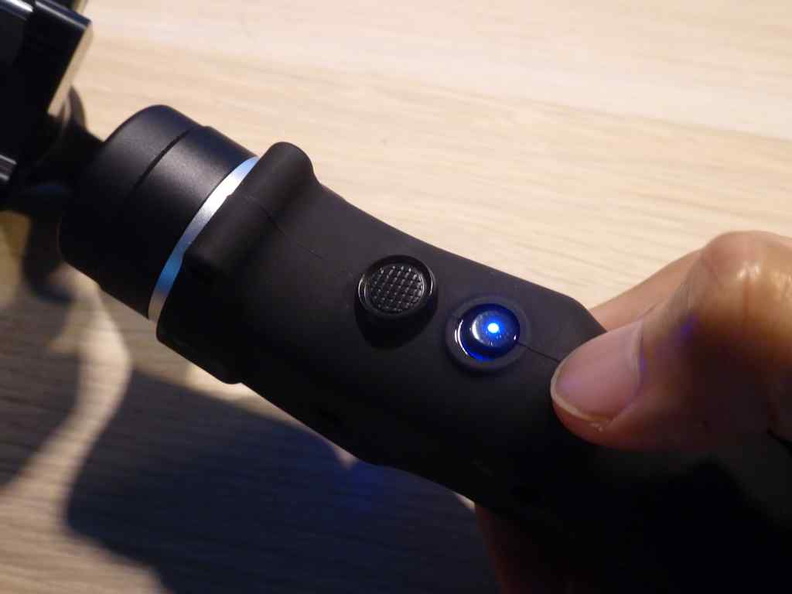
The lack of input control buttons and indicator controls is one area which you can fault Alfawise on the gimbal. You can see where Alfawise had cheapened out to make the gimbal more affordable. There are only 3 input controls on the gimbal. Notably, there is no remote zoom slider rocker.
In addition to the lack of a selfie button (or selfie function to begin with), jogging the gimbal front thumb joystick allows you to transverse your camera up and down with a range of about 170 degrees.
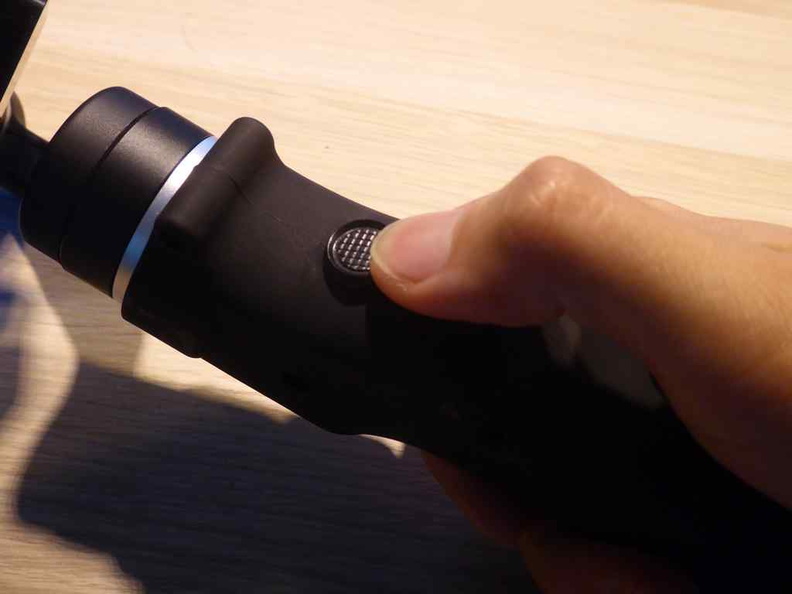
However, strangely, the gimbal does not pan left or right on the joystick despite having a 4-way directional joystick.
Out in the field
Out on my field tests. The Gimbal was able to take heat and stresses of repeated use for an entire day of shooting with impromptu turning on and off in both mixed indoor and outdoors settings.
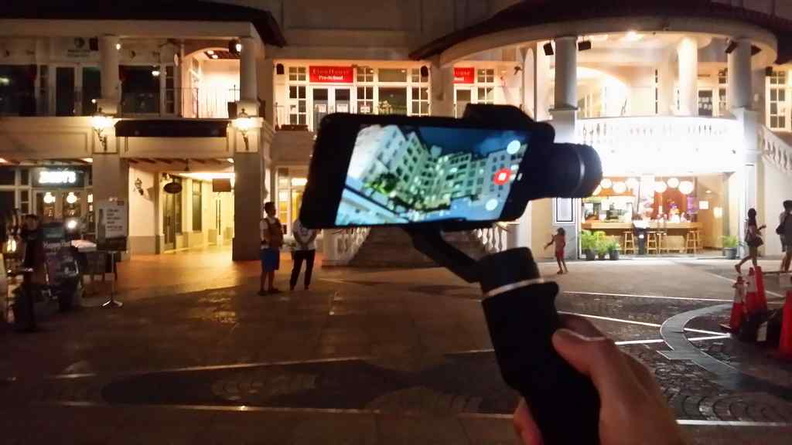
When reviewing the footage, the gimbal does a good job in smoothing out body movements and steps even when walking forward or sideways. It does provide true 3-axis stabilisation. In comparison the shots to the Osmo 2, you can’t tell that the shots are taken with a $50 gimbal or that from a more sophisticated and expensive gimbal setup for instance. The level of stabilisation is indeed very good, comparable to expensive equipment costing much more.
An issue I faced is an over sensitive auto-shutdown. The gimbal will automatically go into a stall shutdown each time it feels that any of its motors are overloaded, when say you are accidentally holding it or an object is in the way. I can guess this is a way the gimbal does to protect the motors from overloading.
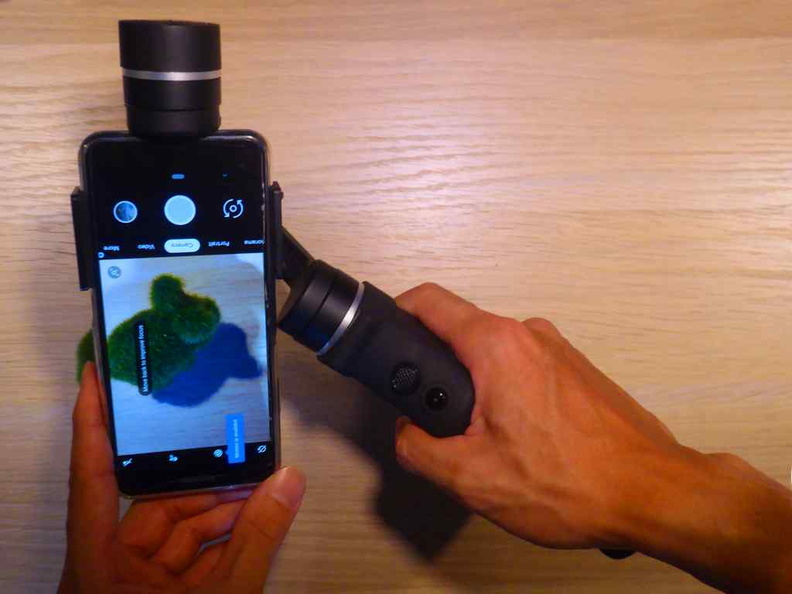
However, it will do this ever so rarely, even the gimbal is unobstructed. Also, notably, when you turn it ON without a phone attached, the gimbal vibrates and goes into a fit before shutting down automatically.
Features which will make shooting easier
Now onto some missing features I wished are available. The Alfawise does not have 1/4-20 UNC threaded port on the body. This is useful so you can attach a tripod extension or a fixed rod for a stabilised camera overhead crane shot. In my case, you can however, easily add on via modifications to the handle or rear battery cover the connector or simply fasten your gimbal using straps.
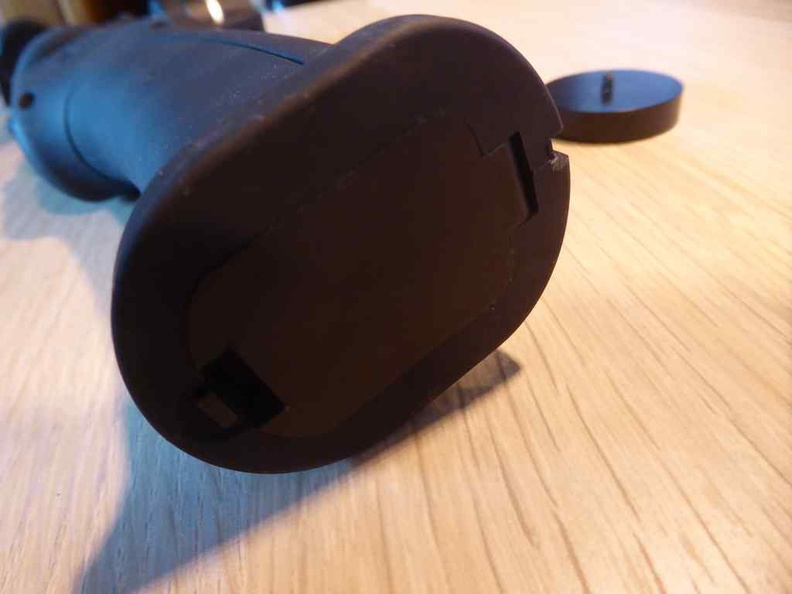
Notably too, the gimbal does not offer an external Type-A USB port which you can use to charge your phone. But that is not a big issue as you can always strap on an external powerbank battery. The gimbal does not snag or obstruct external cables tethered onto your phone. Hence, you can use the gimbal with your phone plugged in too.
Standard 18650 Battery, a neat touch
Moreover, the gimbal is powered by a 18650-type cylinder li-ion battery. It is the same battery found in most portable USB-powered fans and handheld torchlights. Hence, if you are an owner of a USB fan or a handheld torchlight employing charging chances you are already on the 18650 battery ecosystem.

Also, this removable battery turns out to be one of the unexpected unique selling point of the gimbal. Out of juice in the field? You can simply just pop one in a replacement battery from one of your other devices without downtime.
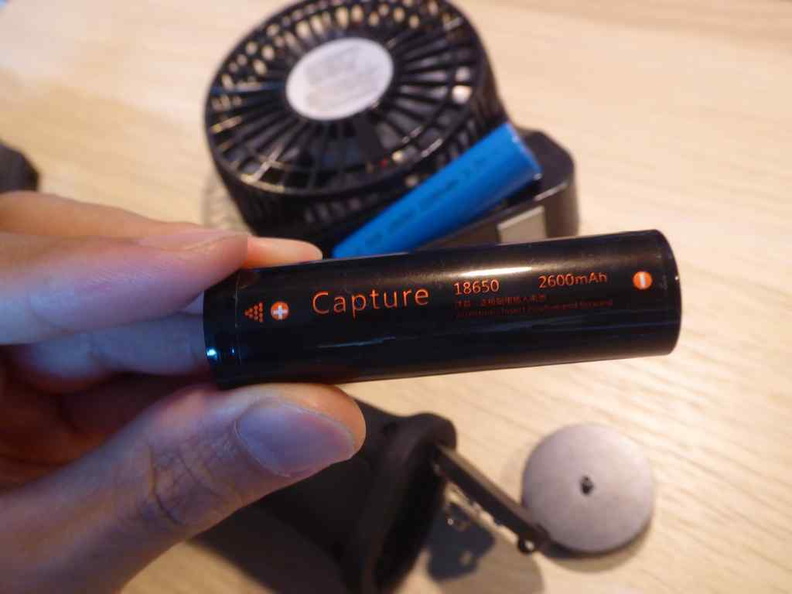
Expandable with other larger capacity batteries
Moreover, the use of these cylindrical cell types at first glance, looks like a cheap alternative to custom-made li-ion cells. However, it turns out to be a blessing in disguise as firstly they are really easily to swap out, and very easy to find replacements for. Charging is done via a Micro-USB port located on the side of the Gimbal body. You can also charge it via a USB powerbank if a wall socket is not available.
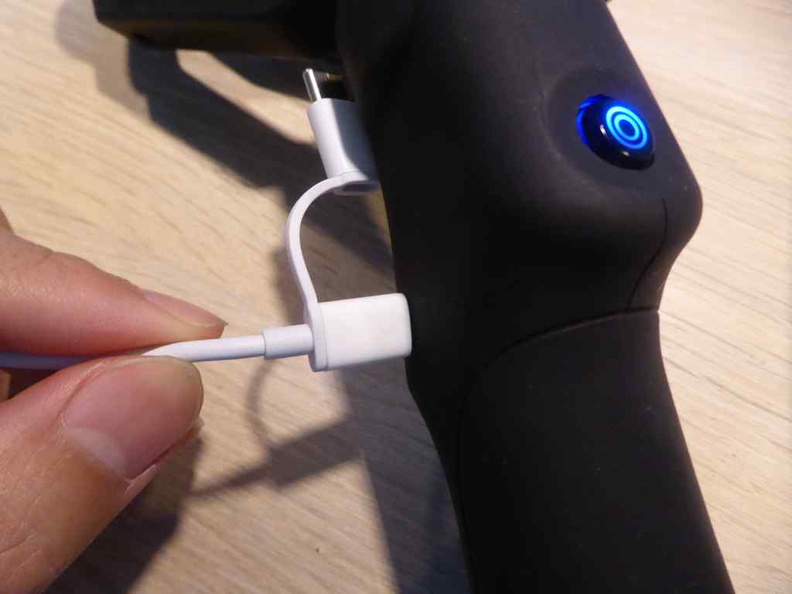
Moreover, the 18650 3.7v batteries do come in a variety of capacities. The largest of its kind I tested on the gimbal sits at 4800mah. The included one in the Gimbal is a smaller 2600mah. Battery life is actually pretty good. While the Osmo 2 is rated to offer incredible 15 hours of battery life. The Alfawise was able to survive through all the torture I threw on it recording for an entire day.
Battery good for a day of shooting
The standard battery lasted me throughout an entire day of shooting, averaging about 4.5 hours of continuous usage, and achieving about 3 hours of stabilised video footage. This is before the Gimbal starts to exhibit symptoms of a depleted battery by suddenly shutdown and going limp right after turning-on. Definitely not a situation you want to be in.
I reckon if I can get about 7 to 8 hours of continuous usage on a larger 4600mah 18650 battery. It is nowhere close to the Osmo 2 15 hours, but definitely more than enough for a full day of shooting.
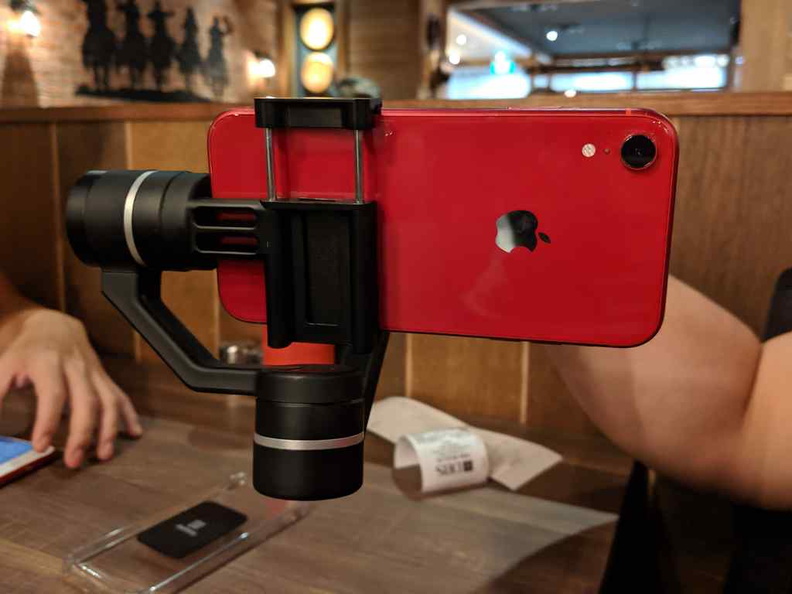
One major gripe is the lack of a battery meter indicator on the Gimbal. Even the mobile app has no means of showing battery life on the screen too. Though I never had any issues of the Gimbal dying on my while out in the field. Be good if Alfaswise were to include a battery indicator. Though having a removable battery does remove much of this worry.
The Gimbal’s Camera Move2 App
Furthermore, complimentary to gimbal is it’s own Camera companion app. You can download it on the iOS or Google App store by searching “Camera Move2”. It is made by Guangzhou Saixing Tech co, ltd.. It’s use is similar to The DJI Go app and used in the similar context.
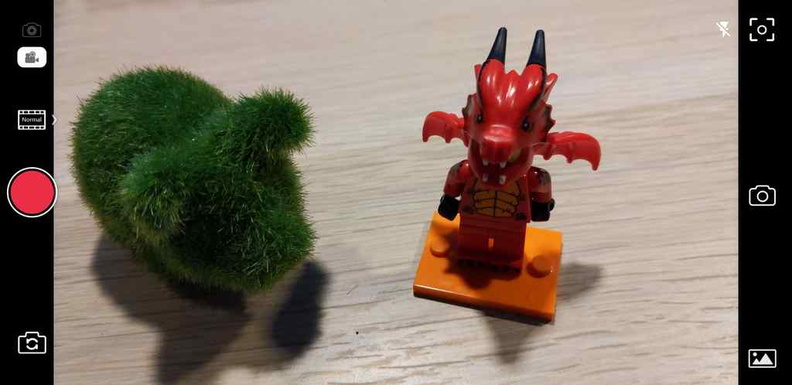
The default app is rather basic. On offer is just a single option photo and video option. The selling point is the ability to remotely capture photos and videos wirelessly via Bluetooth. This is achieved using the remote front trigger button which you can activate using your index finger.
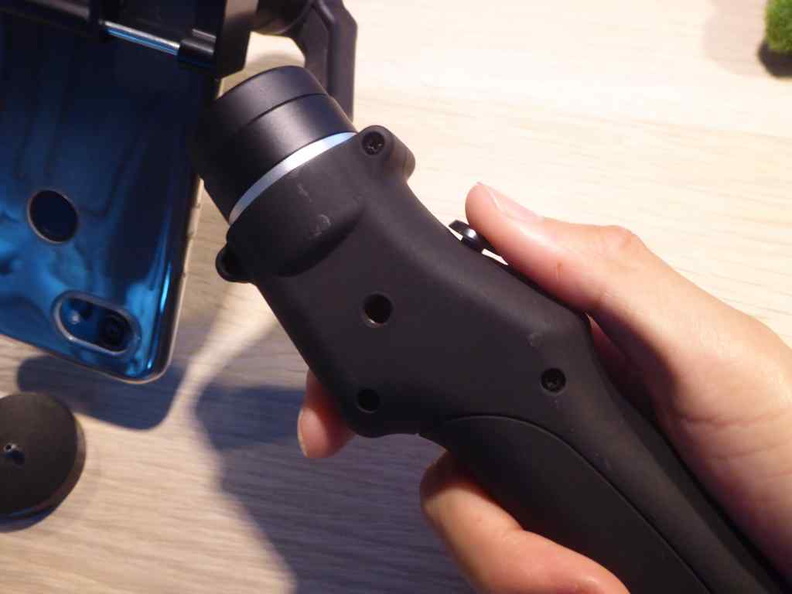
However, in my tests, I found myself using my phone’s default camera app, as I had more flexibility to control my shooting frame rate, which is sadly, not available in the gimbal-included Move2 app. You can only specify the shooting video resolution. You have a choice of 480p, 720p, 1080p and 4k video.
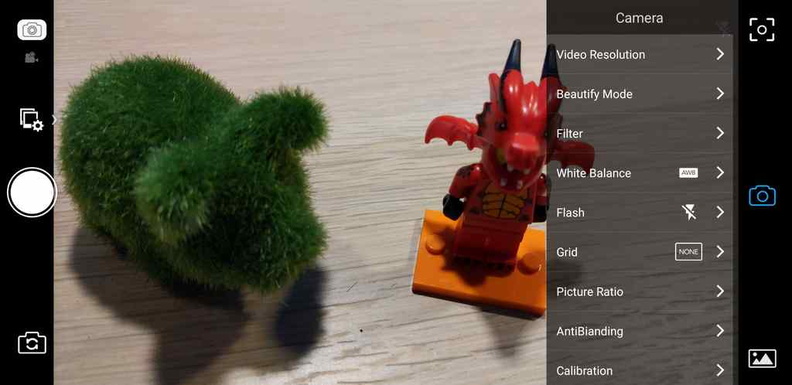
I found forgoing the included app is not much a let-down. I found light taps on your screen to record and switching between shooting modes (e.g. stills or videos) does not affect the stabilisation of your recorded footage. But that of course forgoing too the remote trigger button.
Also, the Move2 app have some advanced functionalities mirrored off the DJI app with abilities such as Video Timelapse. In a nutshell, this mode adopts the same concept of automatically capturing multiple image frames at regular intervals with each mode slightly differing slightly.
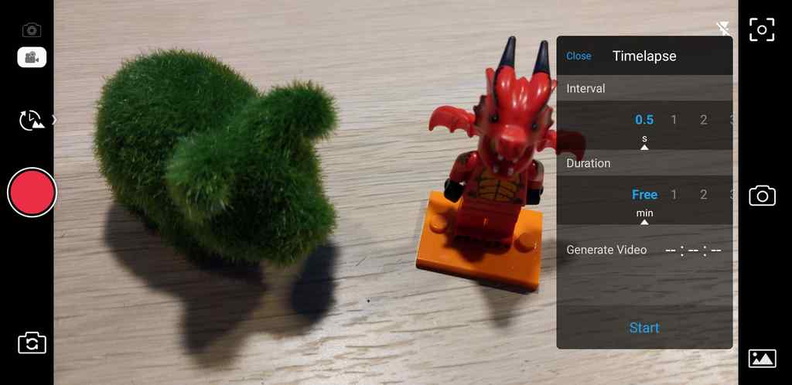
However, there is no motion lapse and hyper-lapse functions, as well as no image recognition function such as ActiveTrack functionality as found on the Osmo 2. There are also no slow-motion photography options. What you pay is what you get.
Conclusions
In conclusion, will I recommend the Alfawise gimbal? It is priced less than half the retail price DJI Osmo 2. But do you get half of what you expect of a gimbal? Not quite, the Alfawise does it job very well as a basic electronic gimbal. If you are looking for a very cheap entry device into the world of electronic gimbals, and do not need any of the fancy software. But it does it job pretty well.
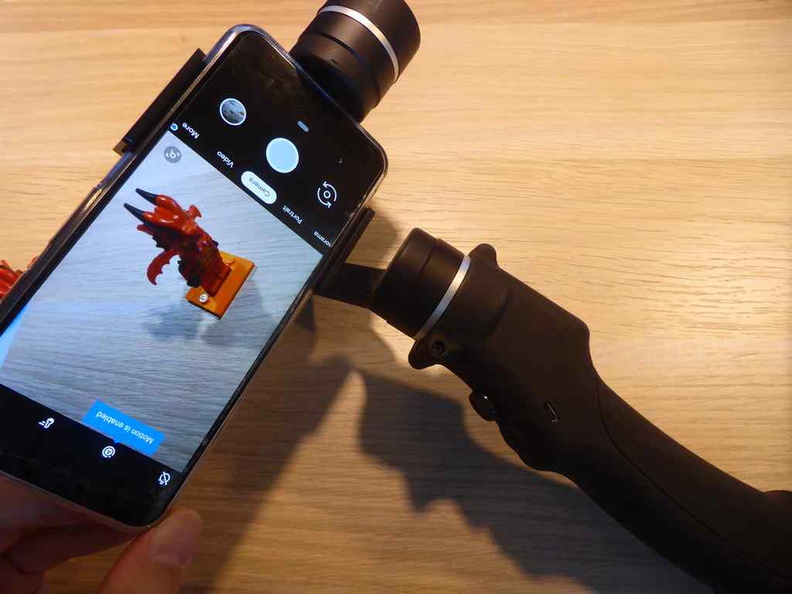
But true that the Alfawise has a number of gripes like a two-way joystick and lack of a battery indicator. The included software app is not that as well defined nowhere as polished as the DJI equivalent. If you see yourself being fine using whatever third-party camera app you are comfortable with. But if you need the enhanced software features, selfies, the DJI Osmo 2 is the way to go.
However, if you are a light casual user looking to enter into the world of gyroscopic gimbals and can’t see yourself forking out over $100 for one. And, are looking for a very stable gimbal minus the fat, the Alfawise is definitely a very good contender for your shortlist.
Pros
- Good stabilisation
- Full-day battery life
- Common and easily replaceable removable battery
- Very good price for offerings
- Solid build quality
Cons
- No battery indicator
- Lack of 1/4-20 UNC thread port
- No selfie, bulky design
- Limited input grip controls
- Primitive Smart phone app
